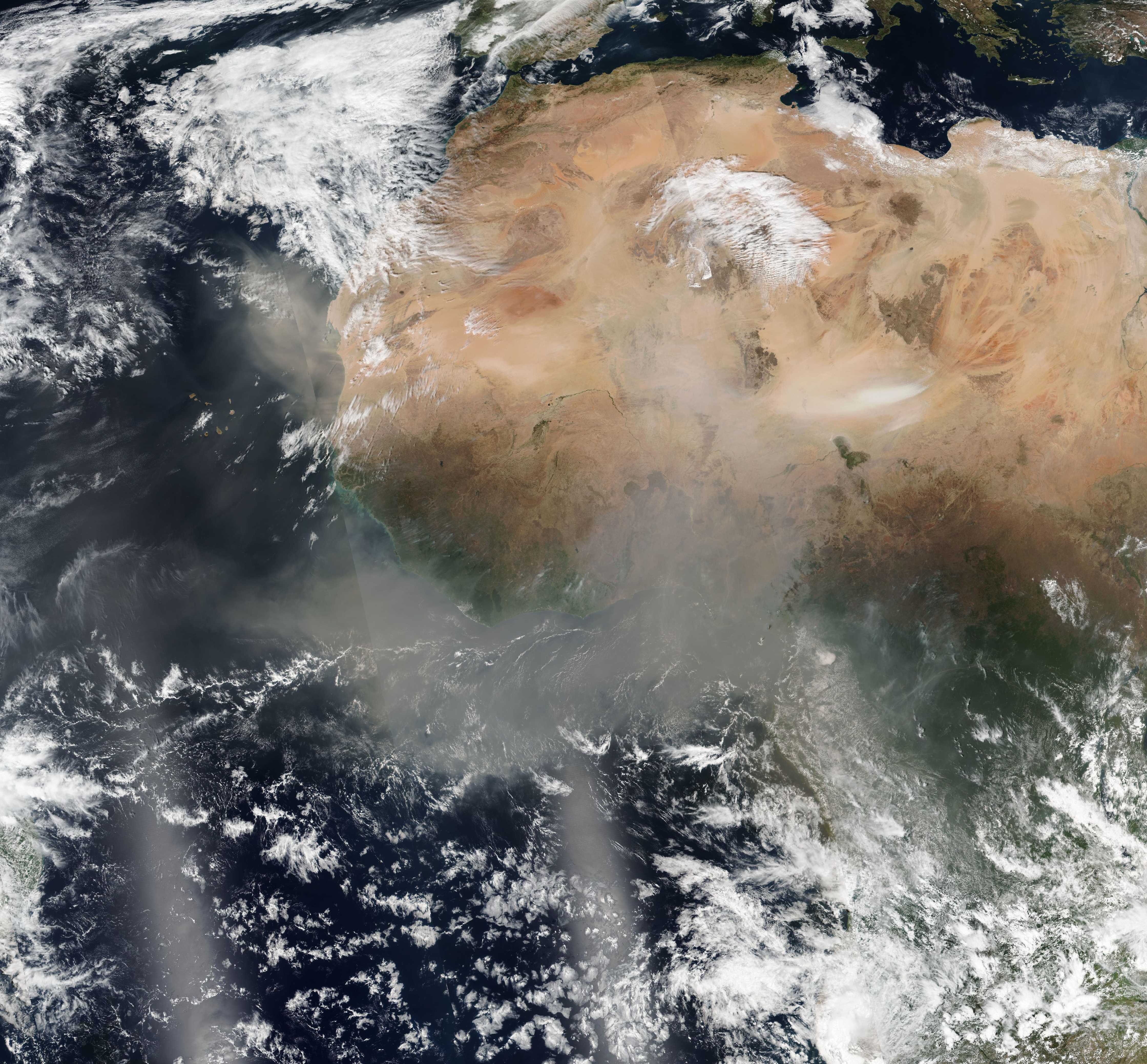[:ja]NASAの地球観測衛星Suomi NPPが撮影したアフリカのミネラルダストの広がりの様子です。

西アフリカでは、11~4月の間に吹く貿易風ハルマッタン(Harmattan)により、サハラ砂漠のミネラルダスト(鉱物ダスト)が巻き上げられ、西アフリカ一体に砂塵を降らせます。ハルマッタンは大量の0.5~10㎛の極めて細かい砂塵を含んでおり、極めて乾燥しており湿気を奪います。最近の研究では、視界がかすむなどの不利益のみならず、幼児の致死率の高さに寄与しているとの指摘がされています。
地上の様子はこちらです。

また、欧州宇宙機関ESAは、人工衛星による観測データをもとに、大気汚染マップを公開しています(Copernicus Sentinel-5P reveals new nasties)。

参考文献: Choking on Saharan Dust (NASA Earth Observatory)
地球俯瞰画像を見る: LiVEARTH
[Earthview Wonders] No.834: African Mineral Dust
NASA’s Suomi NPP satellite captured the spreading African mineral dust.

Between November and April, Harmattan trade winds carry vast amounts of mineral dust from the Sahara Desert across West African skies toward the Gulf of Guinea. The pall of dust that hangs over the region is known as the Harmattan haze—which, fittingly, means “tears your breath apart” in Twi, a common West African language. West Africans have long known the haze season to be one of dry skin and chapped lips, but a recent study led by Susanne Bauer of NASA’s Goddard Institute for Space Studies suggests that dusty skies are more than a nuisance. Her analysis indicates that they are deadly for hundreds of thousands of people each year. A new analysis suggests that exposure to mineral dust may be a bigger cause of premature death in Africa than previously thought.
The local scenery on the ground is as follows.

Also, ESA publicized air pollution map based on satellite data (Copernicus Sentinel-5P reveals new nasties).

Reference: Choking on Saharan Dust (NASA Earth Observatory)
See earthview photo gallery: LiVEARTH[:en][Earthview Wonders] No.834: African Mineral Dust
NASA’s Suomi NPP satellite captured the spreading African mineral dust.

Between November and April, Harmattan trade winds carry vast amounts of mineral dust from the Sahara Desert across West African skies toward the Gulf of Guinea. The pall of dust that hangs over the region is known as the Harmattan haze—which, fittingly, means “tears your breath apart” in Twi, a common West African language. West Africans have long known the haze season to be one of dry skin and chapped lips, but a recent study led by Susanne Bauer of NASA’s Goddard Institute for Space Studies suggests that dusty skies are more than a nuisance. Her analysis indicates that they are deadly for hundreds of thousands of people each year. A new analysis suggests that exposure to mineral dust may be a bigger cause of premature death in Africa than previously thought.
The local scenery on the ground is as follows.

Also, ESA publicized air pollution map based on satellite data (Copernicus Sentinel-5P reveals new nasties).

Reference: Choking on Saharan Dust (NASA Earth Observatory)
See earthview photo gallery: LiVEARTH[:]